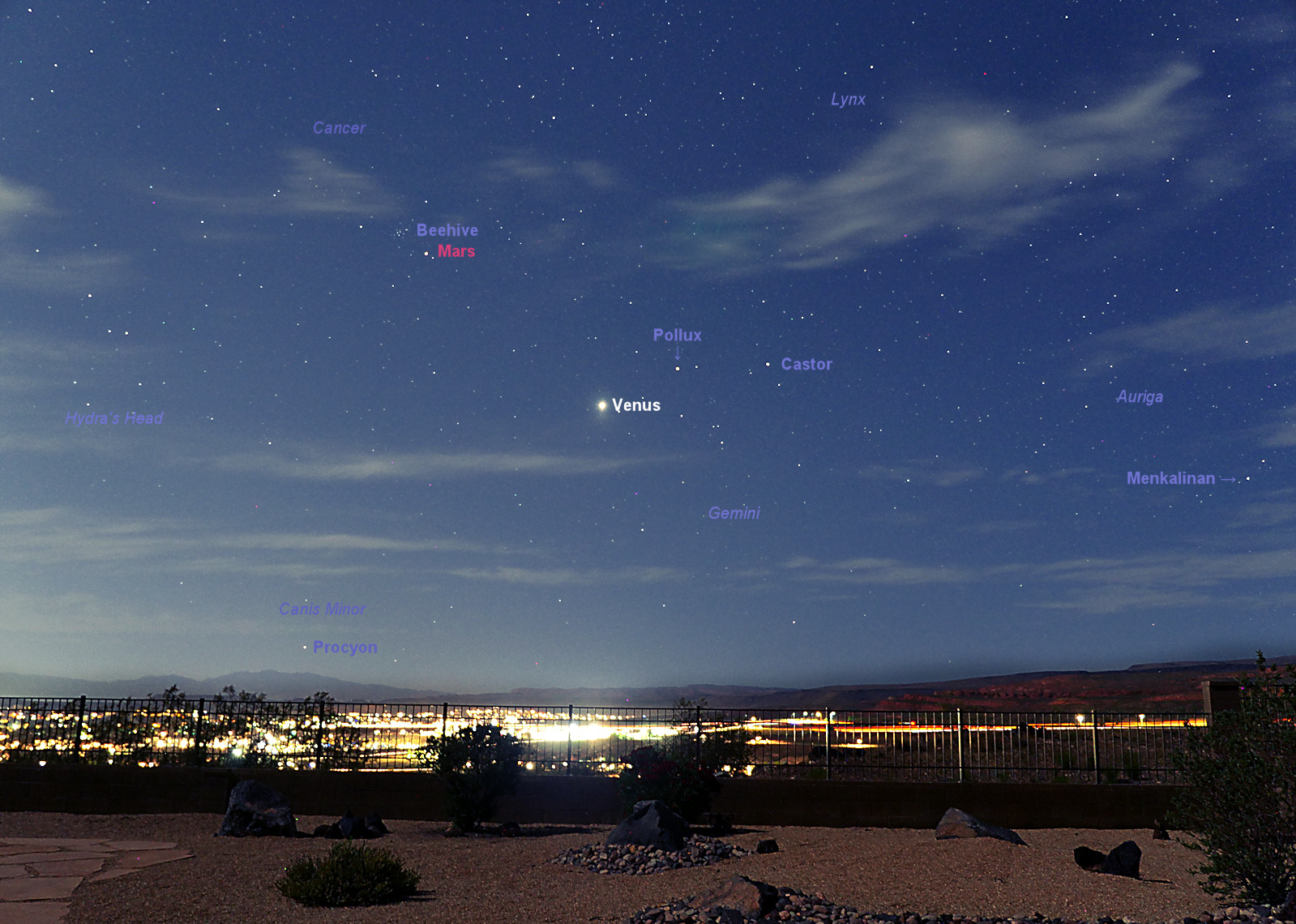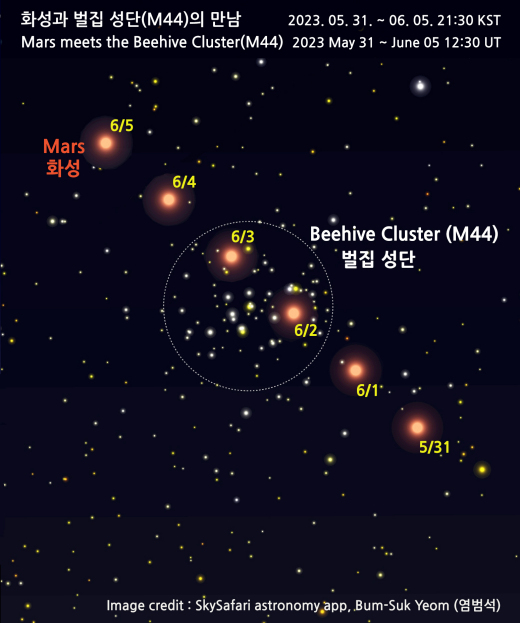[ Skywatchers ] [ Main Menu ]
47485

From: Eve, [DNS_Address]
Subject: How to watch Mars photobomb buzz Beehive Cluster of stars this week
URL: https://www.yahoo.com/lifestyle/watch-mars-photobomb-buzzing-beehive-120000400.html
|
How to watch Mars photobomb the buzzing Beehive Cluster of stars this week Jamie Carter Wed, May 31, 2023, 8:00 AM EDT·2 min read Mars is about to spend two nights moving across the Beehive Cluster, one of the most spectacular open clusters of stars in the night sky. An open cluster is a loosely bound group of stars that have formed together; these clusters are commonly found in spiral galaxies such as the Milky Way, according to the European Space Agency. The Beehive Cluster's 1,000 stars formed just 600 million years ago; for comparison, the sun is about 4.5 billion years old. The cluster — also called Messier 44 (M44), NGC 2632 and Praesepe (Latin for "manger") — sits about 600 light-years from the solar system, according to NASA, which means the light you see left the stars about 600 years ago. Mars is currently 187.5 million miles (301.8 million kilometers) from Earth, which is almost 17 light-minutes, according to Starry Night. The Beehive Cluster will appear to be visited by Mars over two nights and will be best seen in the western night sky a couple of hours after sunset. The planet will be closest to the center of the cluster this Friday (June 2). That's sure to be a colorful event for astrophotographers, who will be able to catch the Red Planet among the 1,000 blue and yellow stars of M44. Mars also will be very close to the cluster this Thursday (June 1); by Saturday (June 3), however, the Red Planet will be significantly beyond the cluster's boundaries. If you use a pair of good stargazing binoculars, you will be able to see about 20 stars in the Beehive Cluster, according to The Binocular Sky, though an astrophotography camera will pick up more. A stargazing telescope will also serve you well. A naked-eye object in dark skies, the Beehive Cluster is about the width of three full moons in the night sky and is found in the faint constellation Cancer, the crab. According to the Farmers' Almanac, Cancer is the dimmest of the 13 constellations of the zodiac — the apparent path of the sun across the celestial sphere over the course of the year. A few weeks after Mars' encounter with the Beehive Cluster, another, brighter planet will appear to pay a visit. On June 13, Venus will move across the outskirts of the open cluster. Although it won't seem as close to the center of the Beehive Cluster as Mars did, it will shine much brighter, making it a more dramatic sight to the naked eye. ----------------------------------------------------------------------------___________________________________________________________________------------------------------------------------------------- EXCERPT: The Red Planet is about the brightness of Castor, but not as bright as when it was closest to Earth on November 30, 2022. Mars is in front of Cancer’s dim stars, near the Beehive star cluster, also known as the Praesepe or manger.  Chart Caption – 2023, June 1: Through a binocular, Mars appears near the Beehive star cluster. The star cluster is visible with an optical assist in a region free from the perpetual glow of outdoor lighting. It appears larger than the Full moon. Through a binocular, Mars is immediately to the lower right of the cluster with two celestial donkeys nearby, Asellus Borealis and Asellus Australis. The animals are supposedly eating from the feed bin. Tomorrow, Mars seems to march through the cluster. Besides outdoor lighting, the bright moonlight this evening interferes with seeing the star cluster, even through a binocular. Two nights before the Full moon phase, the lunar orb, 95% illuminated, is less than 30° above the south-southeast horizon. https://whenthecurveslineup.com/2023/05/08/2023-june-1-mars-nears-beehive-bright-planets/ |
Responses:
[47486]
47486

From: Eve, [DNS_Address]
Subject: +.. More Mars in the Beehive ...
URL: https://earthsky.org/clusters-nebulae-galaxies/praesepe-beehive-cluster/
|
MARS IN THE BEEHIVE: Got a telescope? Point it at Mars. The Red Planet is entering the Beehive Star Cluster. South Korean astronomer Bum-Suk Yeom created an infographic to show their conjunction:  You can see Mars with your naked eye. A telescope is recommended, though; even low magnifications will reveal Mars' rust-colored disk surrounded by the Beehive's splash of stars. Both are located in the constellation Cancer in the western sky after sunset: sky map (= image at top of page). This is a slow-motion conjunction that will last for more than 48 hours. https://spaceweather.com/ |
Responses:
None
[ Skywatchers ] [ Main Menu ]